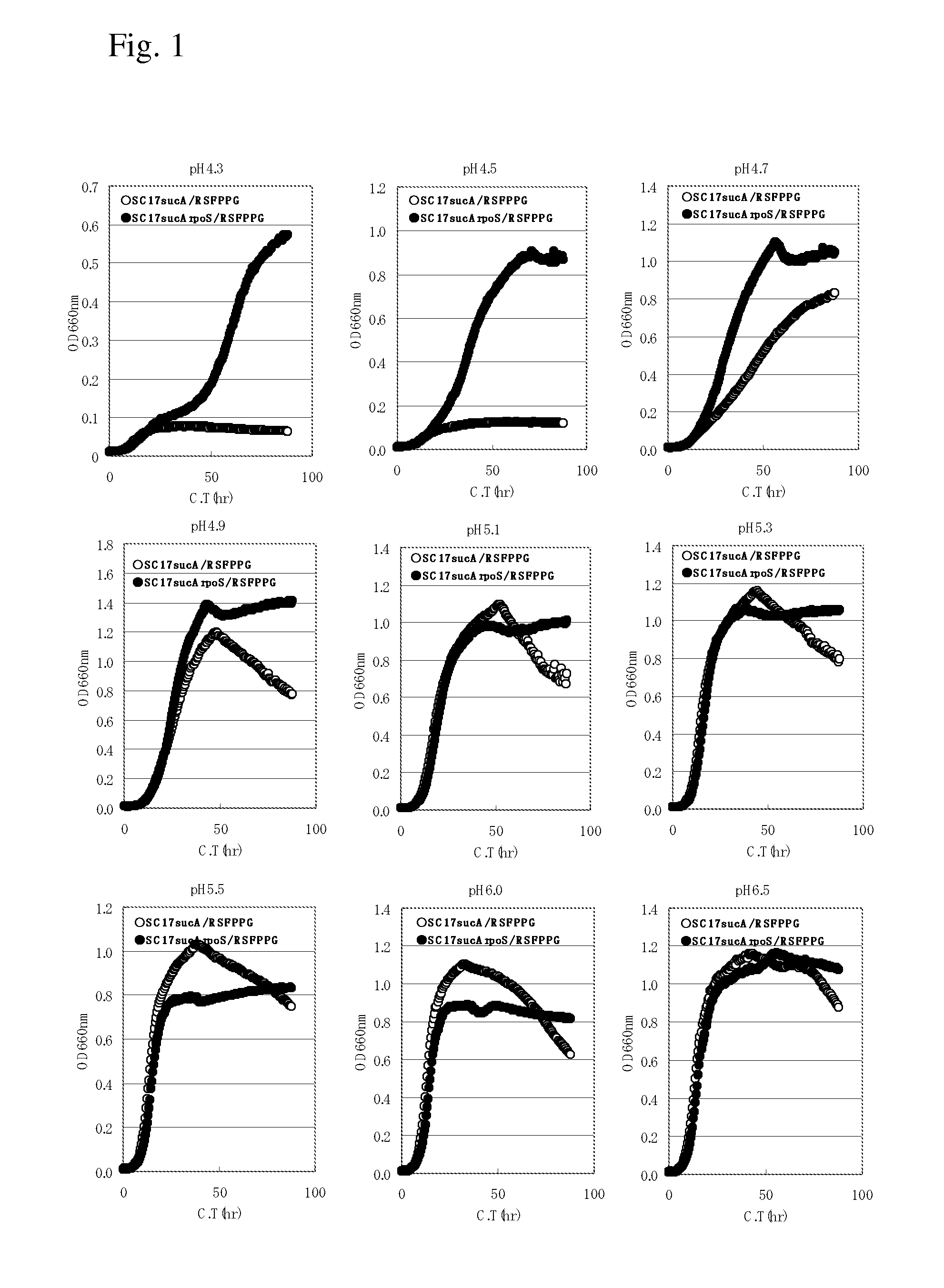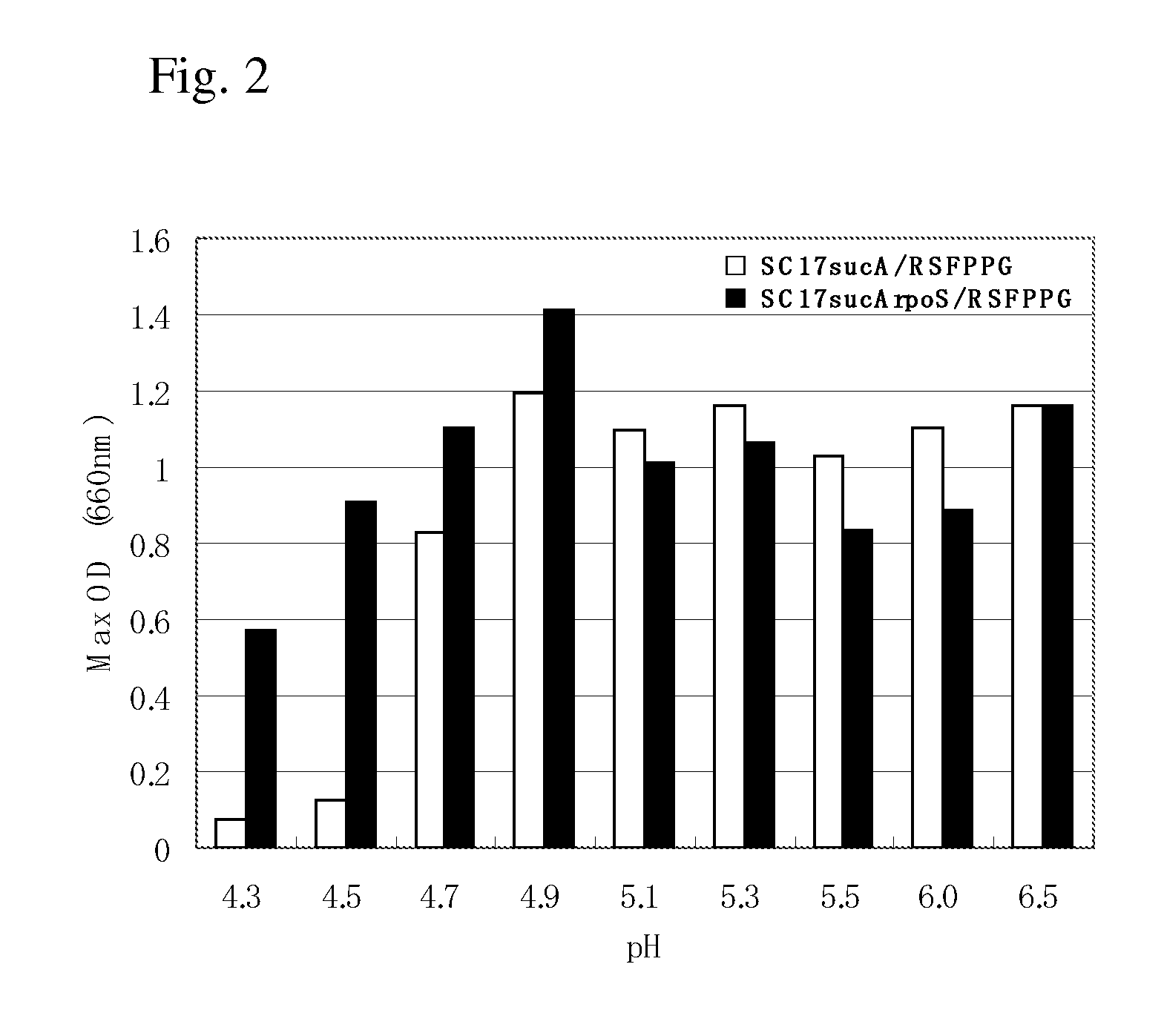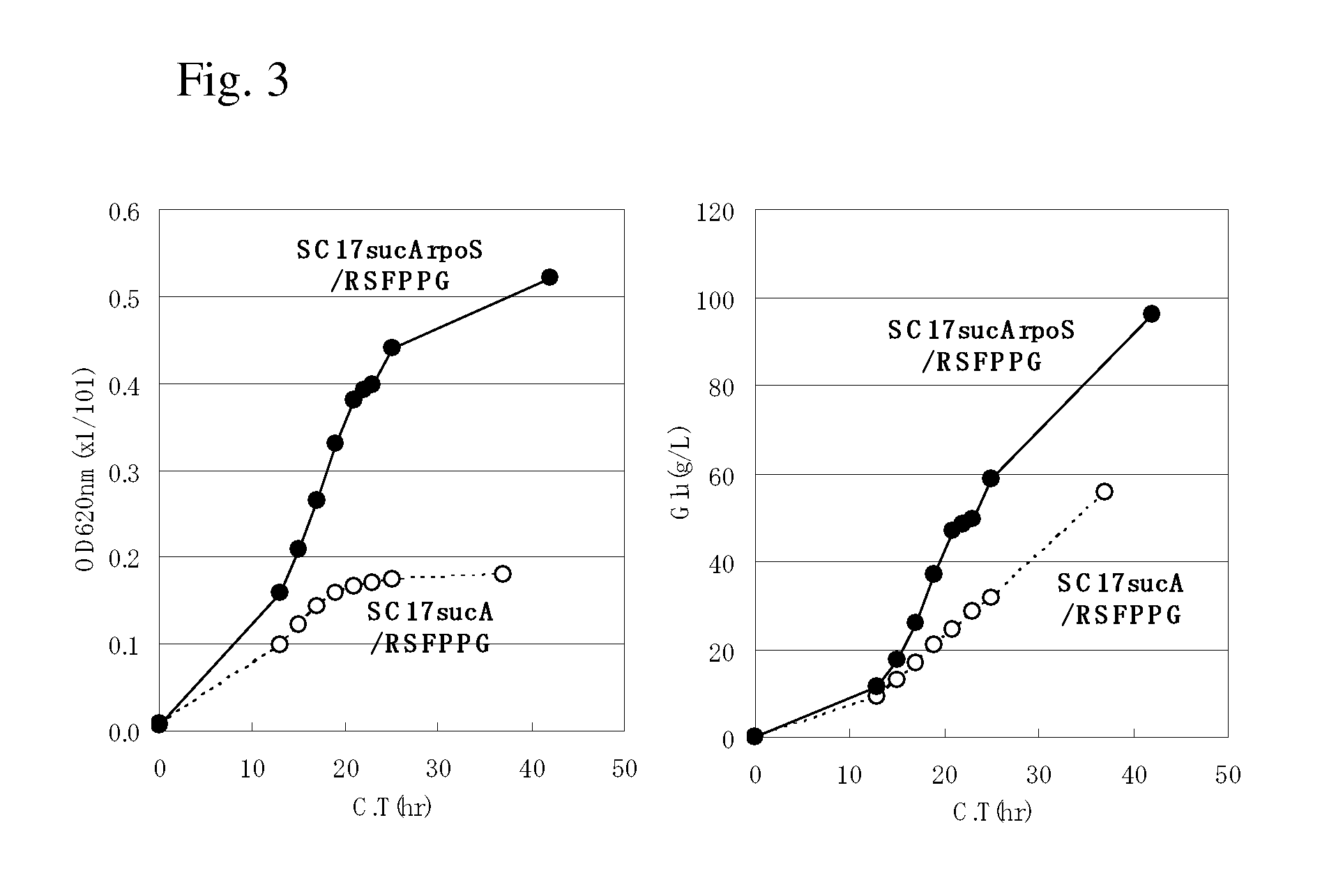L-glutamic acid producing bacterium and a method for producing l-glutamic acid
a technology of l-glutamic acid and producing bacteria, which is applied in the direction of enzymology, peptides, transferases, etc., can solve the problems of unexplored growth of rpos-deficient strains under acidic conditions, and achieve the effect of efficiently producing l-glutamic acid and l-glutamic acid
- Summary
- Abstract
- Description
- Claims
- Application Information
AI Technical Summary
Benefits of technology
Problems solved by technology
Method used
Image
Examples
examples
[0094]The present invention will be explained more specifically below with reference to the following non-limiting Examples.
[0095] Preparation of rpoS Gene-Disrupted Strain
[0096](1) Construction of the plasmid pUT-Tn10 for gene disruption
[0097]To disrupt the rpoS gene, a vector having the tetracycline resistance gene for use in gene disruption using quinaldic acid and tetracycline resistance gene was constructed. First, the tetracycline resistance gene from Tn10 was inserted into the vector. The tetracycline resistance gene was amplified by PCR using primers Tn10-750Xho (SEQ ID NO: 3) and Tn10-3020Xho (SEQ ID NO: 4) and the chromosome from the Escherichia coli K-12 ME8424 strain (Hfr, P045, thi, relA1, tyrA::Tn10, ung-1, and nadB, provided by the National Institute of Genetics, Japan) as a template. Moreover, PCR was performed using primers pUT-3710Xho (SEQ ID NO: 5) and pUT-3020Xho (SEQ ID NO: 6) and pUT399 as a template. This resulted in a fragment of pUT399 with the XhoI site. Bo...
PUM
| Property | Measurement | Unit |
|---|---|---|
| pH | aaaaa | aaaaa |
| pH | aaaaa | aaaaa |
| temperature | aaaaa | aaaaa |
Abstract
Description
Claims
Application Information
 Login to View More
Login to View More - R&D
- Intellectual Property
- Life Sciences
- Materials
- Tech Scout
- Unparalleled Data Quality
- Higher Quality Content
- 60% Fewer Hallucinations
Browse by: Latest US Patents, China's latest patents, Technical Efficacy Thesaurus, Application Domain, Technology Topic, Popular Technical Reports.
© 2025 PatSnap. All rights reserved.Legal|Privacy policy|Modern Slavery Act Transparency Statement|Sitemap|About US| Contact US: help@patsnap.com



